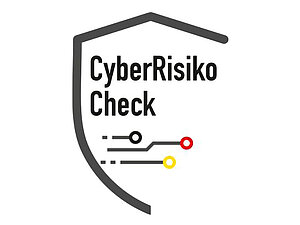BERATEN. QUALIFIZIEREN. ENTWICKELN.
Seit mehr als 20 Jahren sind wir als Berater, Trainer und Recruiter für unsere Kunden in den Regionen Braunschweig, Celle, Wolfsburg, Hannover und Magdeburg tätig. Wir beraten Sie bei der Umsetzung des Datenschutzes, der Einführung der ISO 27001, zu TISAX® und NIS2 sowie der Qualifizierung und Entwicklung Ihrer Mitarbeiter. Und schließlich finden wir das Personal, das Sie suchen. Wir freuen uns, Sie kennenzulernen.
-
Taskforce Cyber Südostniedersachsen: Schützen Sie Ihre digitale Zukunft - Heute!
WeiterlesenIn der heutigen Zeit, in der Cyberangriffe an der Tagesordnung stehen, ist proaktives Handeln unerlässlich. Die Taskforce Cyber Südostniedersachsen garantiert den Schutz Ihrer Unternehmensdaten und hilft rund um die Uhr im Notfall.
-
Der BSI-CyberRisikoCheck nach DIN SPEC 27076 - für die Sicherheit Ihres Unternehmen!
WeiterlesenIn einer zunehmend vernetzten Welt gewinnt die Sicherheit digitaler Systeme kontinuierlich an Bedeutung. Die steigende Häufigkeit von Cyberangriffen erfordert von Unternehmen eine ständige Verbesserung und Aktualisierung ihrer Sicherheitsvorkehrungen.
-
6. Mandala Mittelstand Tagung - IT-Sicherheit
WeiterlesenSicherheitstrends und Anwendungsbeispiele für KMU´s aus dem Bereich IT-Infrastruktur und Regularien, die Sie 2024 erwarten. Anschaulich und greifbar für Sie aufbereitet auf der 6 . MTM Tagung von Mandala, EDV und Internet GmbH.
-
Mehr Sicherheit - der neue VDA TISAX®6-Katalog
WeiterlesenDie Automobilindustrie befindet sich fortlaufend im Wandel und erfordert daher eine kontinuierliche Anpassung und Einhaltung strenger Sicherheitsstandards.
Mit TISAX® (Trusted Information Security Assessment Exchange) hat die Branche einen spezifischen Standard für die Überprüfung der…





